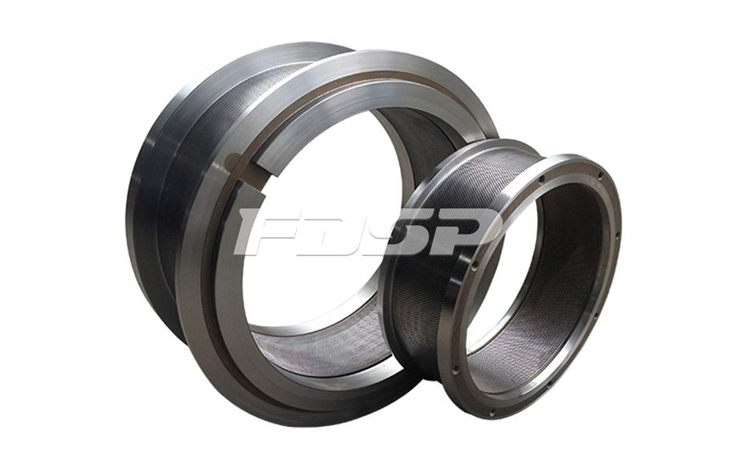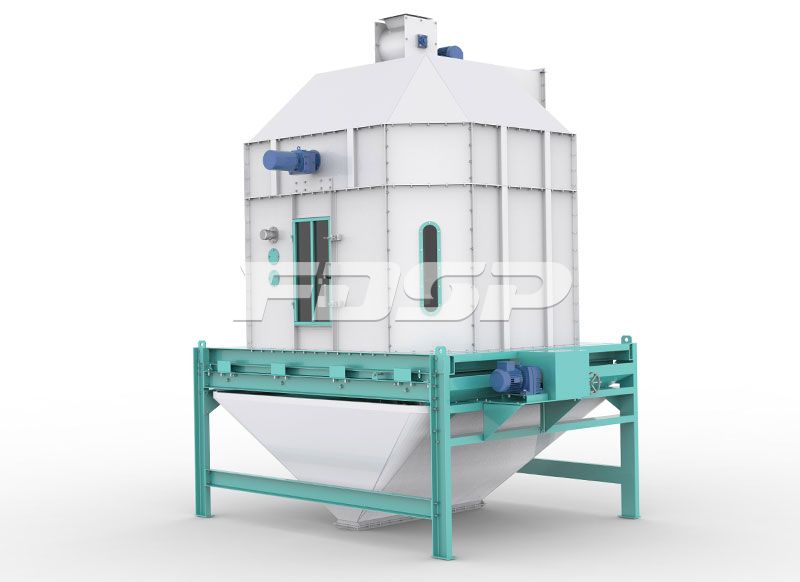Effect of feed production equipment in each section on quality
2021-05-18
1. Influence of steam system
① Small feed mills often use low-pressure steam boilers, whose steam pressure is generally 0.2~0.4MPa, and steam boilers are often placed near the pelletizer. Due to its low output, the steam pipeline has a short transmission distance and the diameter of the pelletizer’s ring die. Small (usually Φ2~Φ3), so the particle quality is better;
② Due to the high output and many equipment of large feed factories, the steam boiler is generally far away from the production workshop, so its transmission pipeline is long (usually several hundred meters), and high temperature and high pressure steam is often used to ensure the steam quality of the pellet mill. Generally use 0.8MPa and 180℃ saturated steam.
From our experience, the steam boiler should be placed near the pelletizer, and the length of the steam pipe should be shortened as much as possible, especially in the north; in addition, the steam boiler should be preferred to the oil furnace, because it is difficult to ensure the stability of the steam pressure of the coal furnace. Otherwise, the steam moisture content is high and the steam pressure is unstable, which will affect the quenching and tempering effect and affect the particle quality.
2. The influence of the conditioner
The granulator (8T/H) used in a feed factory in the north has a conditioner length of 1.4m. Due to the increase in the variety of alternative raw materials added to the feed in recent years, the cold weather in the winter and the long conveying pipeline in the north, the tempering The time is too short, the tempering temperature is low, and the tempering effect is difficult to guarantee. Therefore, the conditioner used in the pellet mill of the northern feed factory should be an enhanced type to ensure the tempering temperature and time of the powdered feed, so as to ensure the quality of the pellet feed.

3. The influence of the ring die and pressure roller of the granulator
Die roll gap: the gap should be ensured to be 0.05~0.3mm, that is, when the ring die rotates, it can drive the pressure roll to rotate. When the gap is large, the ability of the wedge-shaped space between the die rolls to grab the feed decreases, and the squeezing force of the die rolls on the feed decreases. When the pressure is less than the frictional resistance of the inner wall of the die hole to the feed, the pelletizer will block the machine, which will affect the feed. Particle quality.
Generally, when replacing the ring die and pressure roller, it is best to replace them in pairs; during normal production, adjust the gap between the die rollers before starting each shift; when using the old ring die and pressure roller, they should be polished to ensure that the surface is as smooth as possible.
Die damage of the pressure roller: When checking the granulation, if it is found that the pressure roller does not rotate flexibly, it should be replaced in time. Generally, when the pressure roller bearing is damaged, the pressure roller often cannot rotate normally, otherwise, the machine will be blocked and the machine will be blocked. Affect the quality of particles.
Die hole diameter and feed cone hole: under the condition that the thickness of the ring die does not change. When the die hole diameter is reduced, the strength of the feed pellets under extrusion will increase, the pellets will have a neat shape, the hardness and density will increase, and the powdering rate will decrease. Feed pellets with die holes of Φ2~Φ3 are beneficial to the feeding of suckling pigs and chicks. Of course, the reduction in the diameter of the ring die will inevitably lead to a reduction in production efficiency. Therefore, it is necessary to make a reasonable choice based on the above factors.
In addition, if the feed cone of the ring die is severely worn, the pelletizing production output and pellet quality will decrease. Because, at this time, the amount of steam added to the feed is limited (a large amount of steam will block the machine), so that the temperature of feed conditioning is reduced. Therefore, if the ring die is still available, the feed cone hole of the ring die should be processed in time to ensure the output and particle quality.

4. Cooling and crushing effects
① The particles are cooled uniformly and moderately. The counter-flow cooler is more widely used now, which has high cooling efficiency and good effect;
② Particle crushing equipment. When the crushing roller teeth are blunt, they should be repaired in time. Otherwise, the crushing teeth roller will have stronger squeezing effect, the uniformity of feed particles will become poor, and the powdering rate will increase. During normal production, the gap between the crushing rollers should be adjusted correctly according to the feed variety;
③ After the granular material is crushed, a flat rotary grading screen with a small screen surface inclination angle should be used for screening, especially in large feed factories. If the screen surface inclination angle is too large, the granular material will be screened insufficiently, resulting in insufficient The chalking rate increased.